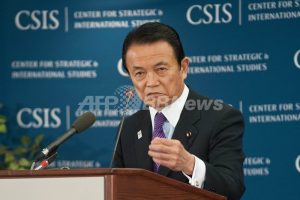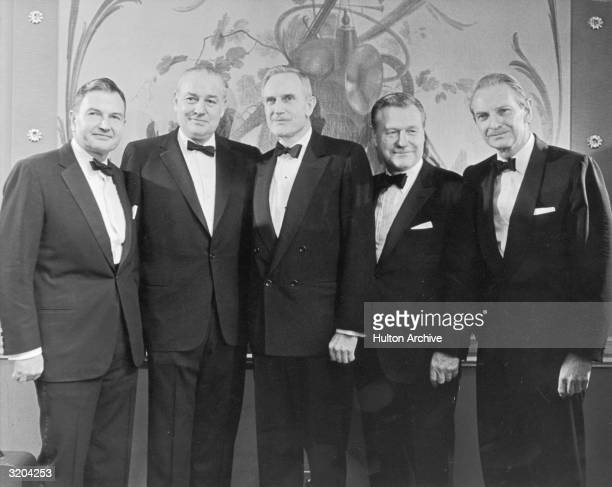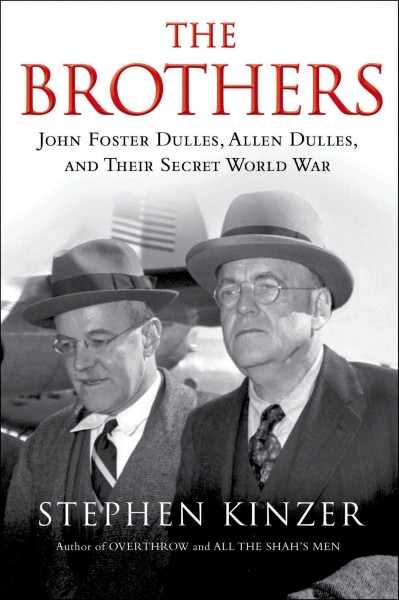At the House of Representatives Budget Committee meeting on October 17, Prime Minister Kishida said, "I myself have been involved in political activities without any relationship with the former Unification Church. We want to solve this problem," he said. To understand this statement, one must first understand what kind of political party the Liberal Democratic Party was founded as. If I were to describe the formation of this party in a few words, it would be a combination of 'water and oil'. Under the watch and protection of the United States, the ruling party remained in power semi-permanently, so the lawmakers belonging to the party enjoyed power and profit sharing. It developed a conflict between factions and repeated pseudo-changes of government, and it was forgotten that it was a coalition.
However, the situation changed completely when former Prime Minister Shinzo Abe was shot dead in July. In the LDP, there was the former conservative mainstream faction "Kochikai", whose founder was Shigeru Yoshida, who was friendly with the center of power in the United States and was considered to be in favor of the United States from before and during the war. It was once again recognized that there are two conflicting origins of the Seiwakai (Abe faction), a branch faction founded by Nobusuke Kishi, who played a central role in the execution of the Pacific War and was imprisoned as a Class-A war criminal after the defeat.
Kishida proudly asserted that " I myself have been involved in political activities without any affiliation with the former Unification Church. This is because he is the leader who leads the "Kochikai". In other words, it is equivalent to stating, " We are a political group with a different origin and political stance from the Abe group." That's why Kishida replied, " I, who has nothing to do with him, will take responsibility and solve this problem for the future.''Kishida's statement that he will "solve this problem for the future" is a declaration that he will "dismantle the Unification Church and the Seiwakai (Abe faction), which is a fraternity, and wipe out the affiliated members to fundamentally reorganize the party." I have no choice but to read it like this.
In 1954, before the conservative coalition, Ichiro Hatoyama and Nobusuke Kishi, who had left the Liberal Party led by Shigeru Yoshida, formed the Japan Democratic Party by rallying Bukichi Miki and Ichiro Kono against Yoshida. Hatoyama, the leader of the Liberal Party, who won the first general election after the war in 1946, was expelled from public office, and the seat of prime minister fell to Yoshida. Yoshida refused when Hatoyama, who returned to politics in 1952, pressed for a transfer of power. In 1952, Nobusuke Kishi, who had been expelled from public office after being released as a war criminal suspect, was lifted from his banishment and joined the Liberal Party to which his younger brother Eisaku Sato belonged. However, he was expelled from the Liberal Party due to a line conflict with Yoshida. Kishi and Hatoyama, who had been tied against Yoshida at one point, were forced by the CIA to join forces with the Liberal Party led by Yoshida. Yoshida refused to join the party for two years after the formation of the Liberal Democratic Party and protested. Will the Liberal Democratic Party leave the coalition in 67 years?
■ Why Prime Minister Kishida?
Prime Minister Abe, who launched his second administration at the end of 2012, completed the heavy duties imposed by Washington, including the new security legislation in 2015, and resigned halfway through his term in August 2020, just after the longest consecutive tenure in history. did.
In the 2020 presidential election, it was reported that Taro Aso, the deputy prime minister and finance minister who advocates the revival of Taiko Ikekai, has been searching for a way to concede to (then) Policy Research Council chairman Kishida from an early stage in line with Abe. Seiwakai, the largest faction, also made remarks in support of Kishida, saying, "Mr. Abe's true feelings are Mr. Kishida," (former Prime Minister Yoshiro Mori). However, Kishida's response to the corona benefit became a hot ball, and Aso and Toshihiro Nikai launched their support for Chief Cabinet Secretary Yoshihide Suga. In the background, we could catch a glimpse of Washington's signal that "for the time being, Abe's line will continue as it is."
In the 2021 presidential election, in which the incumbent Kan postponed his candidacy, Kishida defeated Taro Kono, who advocated "anti-nuclear power generation," which touched the wrath of the United States in the decisive vote, and became president, becoming the 100th Prime Minister. What should be noted here is Abe's behavior. The Abe faction postponed picking up a candidate from its own faction, and while Abe fully supported Sanae Takaichi, a non-factional right-wing nationalist who was expelled from the Seiwakai, many veteran lawmakers supported Kishida. . Aso, who was considered to be Abe's ally, did not bow to Takaichi. The votes of the Aso faction went to Kono and Kishida, who belong to the faction. The origin of the Aso faction was Hiroikekai, so it was natural that a considerable number of votes went to Kishida.
Shinzo Abe enthusiastically supported Takaichi, who had been expelled from the Seiwakai, because Takaichi was in line with his principles, the ideological apparatus of the first Abe administration, and the political stance of the Nippon Kaigi and the Unification Church. If it hadn't been for the expulsion of the faction, there is a high possibility that Takaichi would have become a unified candidate for the Abe faction. However, in his second administration, Prime Minister Abe appointed Kishida as foreign minister for four years and seven months, the longest post-war appointment, excluding Shigeru Yoshida, who also served as prime minister. He often hinted at concessions to Kishida. In fact, it seems that Abe was caught between the US Japan handlers and the right-wing supporters such as the Nippon Kaigi and the Unification Church regarding the treatment of Kishida.
Kishida, who has just become the chairman of Yoshida's direct faction, "Koikekai," which was a political opponent of his grandfather Kishi and advocated a lightly armed and economic priority policy, following the flow of control of the finance and finance bureaucrats, which Abe hated most. Appointed for a long time as foreign minister in charge of relations with the United States and Japan-U.S. security. Moreover, it was during the most important period of time, the enactment of the new security legislation that changed the Japan-US security system. This is not Abe's intention. It should be considered Washington's intention. The Japanese media never mentioned it, but if you look at it like this, you can understand Abe's dilemma, and it makes sense that the largest faction, the Seiwakai, was unable to field its own candidate.
 Another is the presence of Taro Aso (pictured), who is a pro-neoconservative and pro-Taiwan hawkish deputy prime minister from the LDP's orthodox Hirochikai. Aso seems to have gotten along well with Abe personally, but it is said that the intention of the above-mentioned center of power in the United States worked behind the scenes for nearly eight years of unprecedented power control by Prime Minister Abe and Deputy Prime Minister and Finance Minister Aso. I have no choice but to watch. Aso is indispensable to handle Japanese politics for Wall Street and giant financial capitals such as Rockefeller and Morgan, who are the center of power in the United States, with whom his great-grandfather Nobuaki Makino and the Imperial Court group have cultivated strong ties since before the war. Moreover, Kishida was necessary for Aso's Taiko Ikekai revival.
Another is the presence of Taro Aso (pictured), who is a pro-neoconservative and pro-Taiwan hawkish deputy prime minister from the LDP's orthodox Hirochikai. Aso seems to have gotten along well with Abe personally, but it is said that the intention of the above-mentioned center of power in the United States worked behind the scenes for nearly eight years of unprecedented power control by Prime Minister Abe and Deputy Prime Minister and Finance Minister Aso. I have no choice but to watch. Aso is indispensable to handle Japanese politics for Wall Street and giant financial capitals such as Rockefeller and Morgan, who are the center of power in the United States, with whom his great-grandfather Nobuaki Makino and the Imperial Court group have cultivated strong ties since before the war. Moreover, Kishida was necessary for Aso's Taiko Ikekai revival.

 Allen Dulles entered the OSS in 1940 after the outbreak of World War II. As head of the Bern bureau in Switzerland, he was involved in the surrender negotiations with Japan as well as the surrender negotiations with the German army. After the war, he became Deputy Director of the CIA in 1951, and became the first civilian Director of the CIA in 1953 with the inauguration of the Eisenhower administration. Under Director Allen, the CIA, whose main mission was collecting information until the Truman administration, transformed into a sabotage agency focused on "assassination, subversion, and conspiracy." In the Far East, the Korean War broke out in 1950, and General MacArthur, the Allied Forces Commander-in-Chief, was dismissed in 1951, and the CIA suddenly became more active.
Allen Dulles entered the OSS in 1940 after the outbreak of World War II. As head of the Bern bureau in Switzerland, he was involved in the surrender negotiations with Japan as well as the surrender negotiations with the German army. After the war, he became Deputy Director of the CIA in 1951, and became the first civilian Director of the CIA in 1953 with the inauguration of the Eisenhower administration. Under Director Allen, the CIA, whose main mission was collecting information until the Truman administration, transformed into a sabotage agency focused on "assassination, subversion, and conspiracy." In the Far East, the Korean War broke out in 1950, and General MacArthur, the Allied Forces Commander-in-Chief, was dismissed in 1951, and the CIA suddenly became more active. Another is the presence of Taro Aso (pictured), who is a pro-neoconservative and pro-Taiwan hawkish deputy prime minister from the LDP's orthodox Hirochikai. Aso seems to have gotten along well with Abe personally, but it is said that the intention of the above-mentioned center of power in the United States worked behind the scenes for nearly eight years of unprecedented power control by Prime Minister Abe and Deputy Prime Minister and Finance Minister Aso. I have no choice but to watch. Aso is indispensable to handle Japanese politics for Wall Street and giant financial capitals such as Rockefeller and Morgan, who are the center of power in the United States, with whom his great-grandfather Nobuaki Makino and the Imperial Court group have cultivated strong ties since before the war. Moreover, Kishida was necessary for Aso's Taiko Ikekai revival.
Another is the presence of Taro Aso (pictured), who is a pro-neoconservative and pro-Taiwan hawkish deputy prime minister from the LDP's orthodox Hirochikai. Aso seems to have gotten along well with Abe personally, but it is said that the intention of the above-mentioned center of power in the United States worked behind the scenes for nearly eight years of unprecedented power control by Prime Minister Abe and Deputy Prime Minister and Finance Minister Aso. I have no choice but to watch. Aso is indispensable to handle Japanese politics for Wall Street and giant financial capitals such as Rockefeller and Morgan, who are the center of power in the United States, with whom his great-grandfather Nobuaki Makino and the Imperial Court group have cultivated strong ties since before the war. Moreover, Kishida was necessary for Aso's Taiko Ikekai revival.